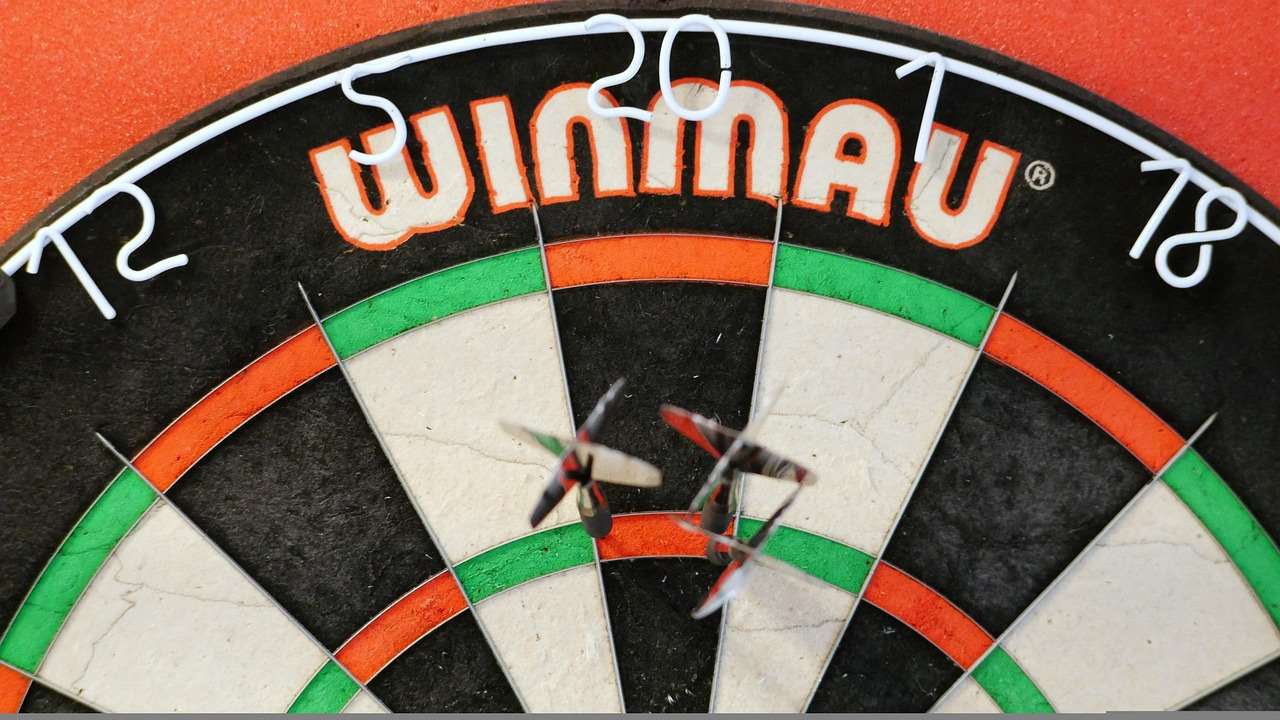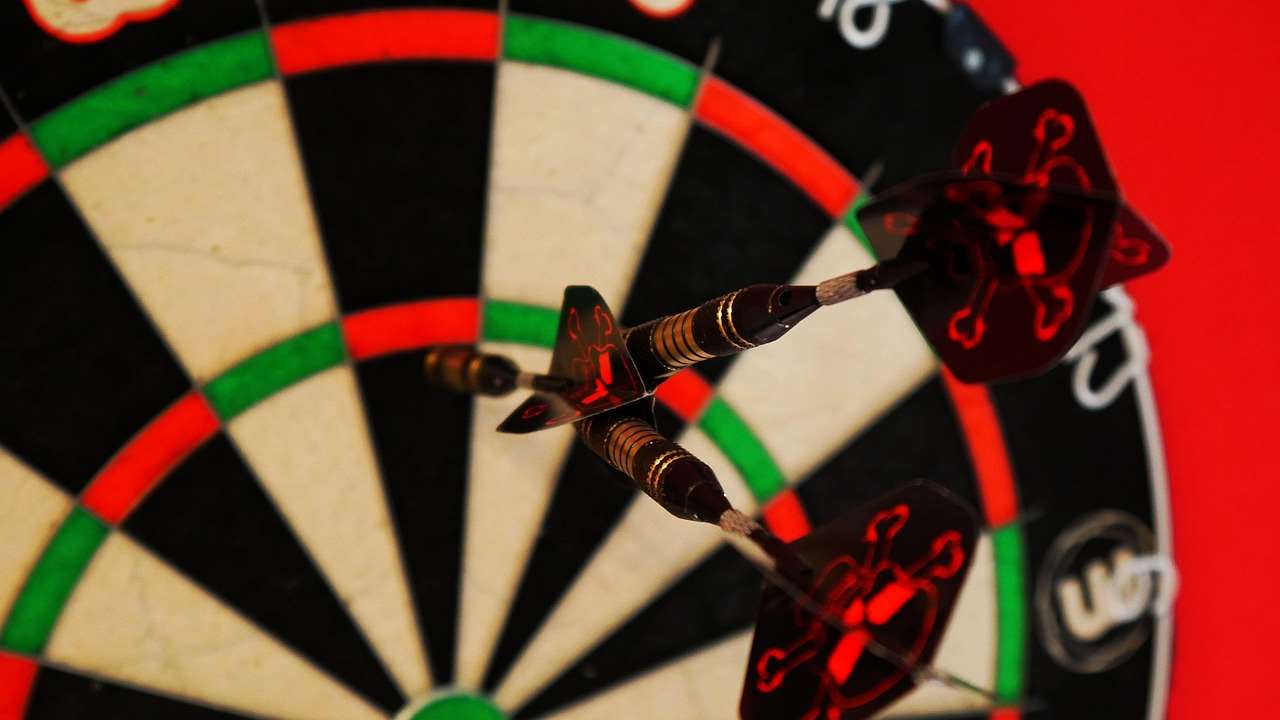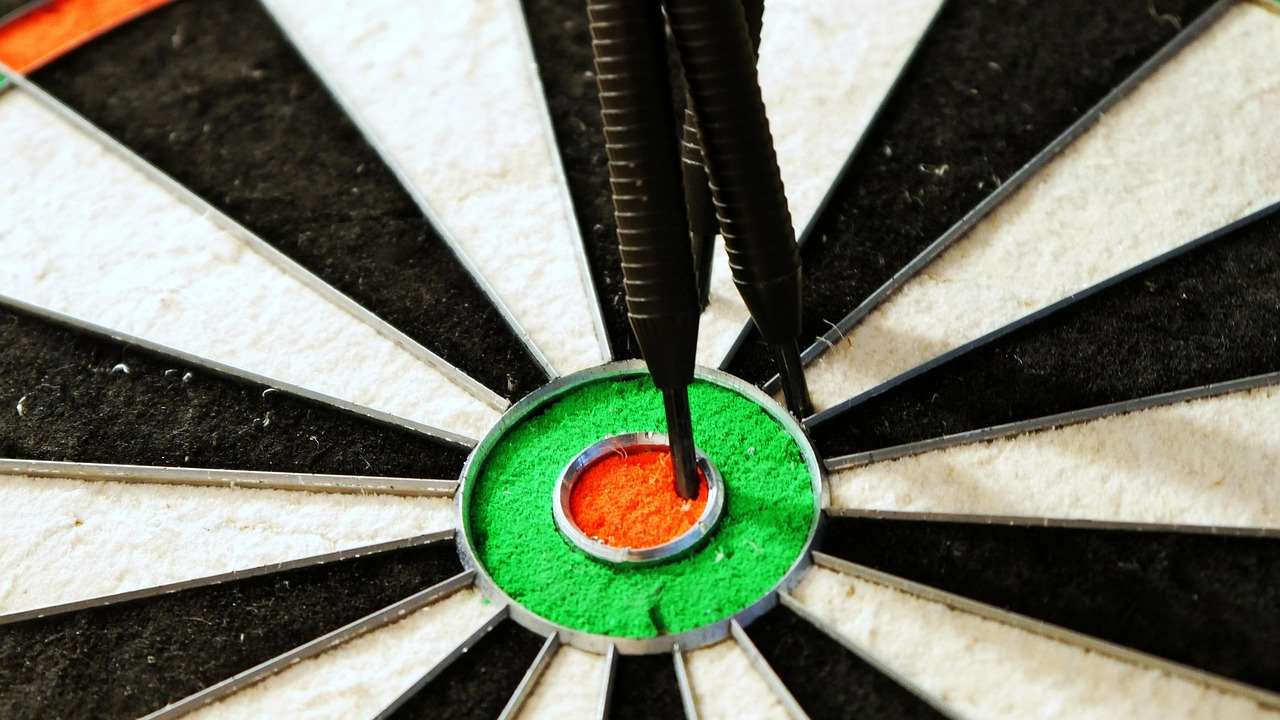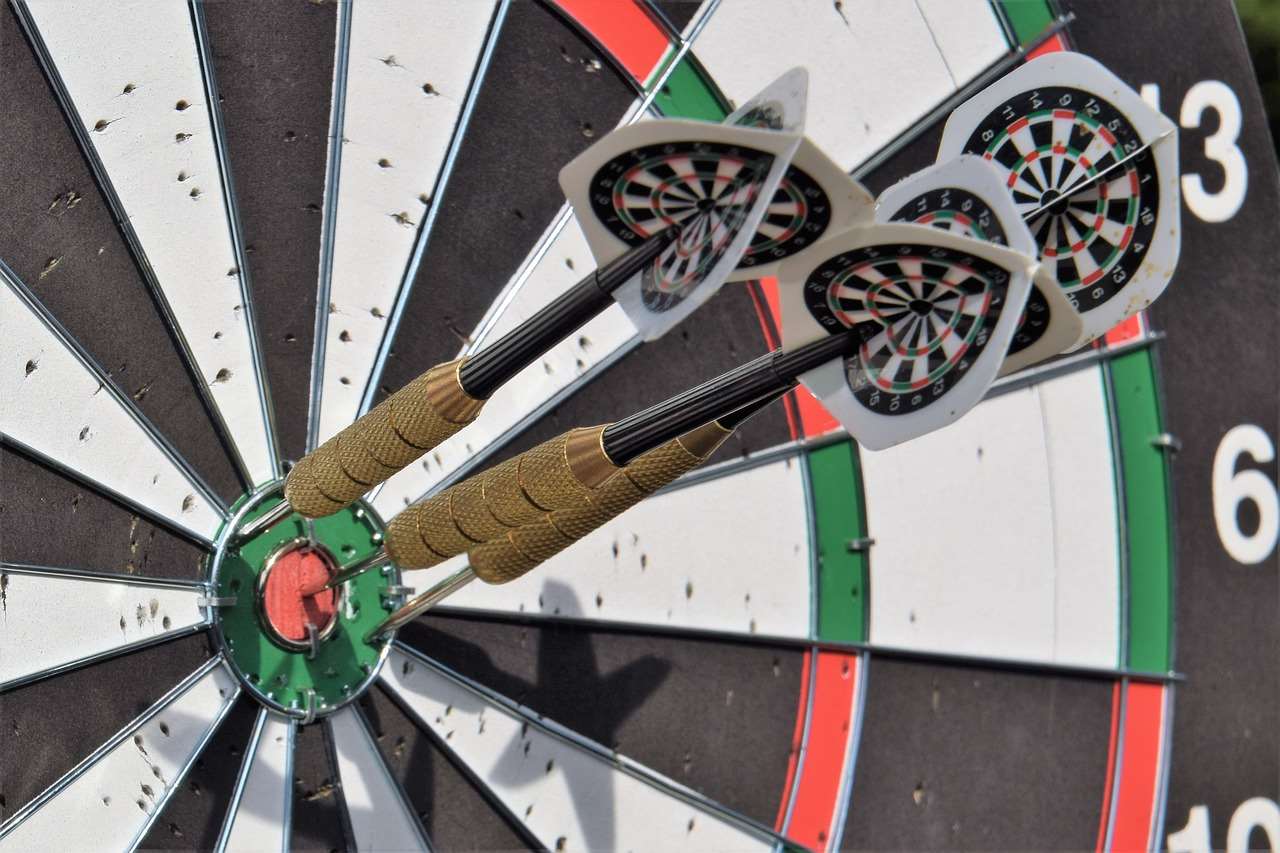The core challenge in **adapting rules for virtual reality (VR) darts games** lies in replicating the nuances of physical darts while leveraging the unique capabilities of VR. This article explores practical rule modifications and considerations to create engaging, balanced, and enjoyable VR darts experiences. We’ll delve into aspects like physics adjustments, aiming assistance, scoring systems, and social interaction enhancements.
⚠️ Still Using Pen & Paper (or a Chalkboard)?! ⚠️
Step into the future! The Dart Counter App handles all the scoring, suggests checkouts, and tracks your stats automatically. It's easier than you think!
Try the Smart Dart Counter App FREE!Ready for an upgrade? Click above!
Understanding the Core Differences: Physical vs. Virtual Darts
Before we dive into adapting rules for virtual reality (VR) darts games, it’s crucial to understand the fundamental differences between the physical and virtual realms. In physical darts, players rely on proprioception, muscle memory, and visual cues to accurately throw darts. The weight and feel of the dart, the distance to the board, and the subtle adjustments in stance all play a vital role.
VR darts, however, introduces a layer of abstraction. The physics engine governs dart trajectory, and players interact through controllers or hand tracking. This necessitates careful consideration of how these elements impact the gameplay experience. Issues like latency, tracking accuracy, and the lack of tactile feedback can significantly affect performance. The best way to understand the basic principles is to start with Basic Darts Fundamentals for Beginners, even in VR.

Key Areas for Rule Adaptation in VR Darts
Several key areas require adaptation to ensure a balanced and enjoyable VR darts experience:
- Physics Simulation: The accuracy of the physics engine is paramount. Realistic dart flight, bounce, and impact behavior are crucial for immersion.
- Aiming Assistance: Some level of aiming assistance may be necessary to compensate for the lack of tactile feedback and potential tracking inaccuracies.
- Scoring System: The scoring system should accurately reflect dart placement and provide clear visual feedback.
- User Interface (UI) and Feedback: Clear and intuitive UI elements are essential for displaying scores, statistics, and other relevant information.
- Multiplayer Interaction: VR’s social capabilities can be leveraged to create engaging multiplayer experiences.
Adapting Throwing Mechanics for VR
Replicating the natural throwing motion in VR can be challenging. Consider these adaptations:
- Controller Tracking: Ensure accurate controller tracking to minimize latency and provide a responsive feel.
- Hand Tracking: If using hand tracking, calibrate the system to accurately represent hand movements.
- Throwing Assistance Options: Offer adjustable aiming assistance options to cater to different skill levels. These could include trajectory guides or subtle auto-aim features. However, ensure these assists don’t make the game too easy, as this diminishes the sense of accomplishment. Consider also how How to make darts fairer with handicap rules can be incorporated.

Refining Physics and Trajectory in Virtual Darts
The physics engine is the heart of any VR darts game. Accurate physics simulation is key for a realistic and enjoyable experience. Fine-tuning these parameters can significantly improve the gameplay:
- Dart Weight and Aerodynamics: Simulate the weight and aerodynamic properties of different dart types. This can affect dart flight and impact behavior.
- Gravity and Air Resistance: Calibrate gravity and air resistance to create a realistic dart trajectory.
- Collision Detection: Implement accurate collision detection to ensure darts realistically impact the board and other surfaces.
Think about how the feeling of dart weight and aerodynamics can be slightly altered to add to the virtual feel of the game, instead of strictly mimicking reality. Consider offering variable settings to cater to different player preferences. Remember that, in the digital world, you have the freedom to bend the rules of physics to enhance the gaming experience.
Aiming Assistance: Finding the Right Balance
One of the most debated aspects of adapting rules for virtual reality (VR) darts games is the use of aiming assistance. While purists may argue against any form of assistance, it’s often necessary to compensate for the lack of tactile feedback and potential tracking inaccuracies. Here are some common aiming assistance techniques:
- Trajectory Guides: Display a projected trajectory line to help players visualize the dart’s path. This can be toggleable or adjustable in length and sensitivity.
- Auto-Aim: Subtly adjust the dart’s trajectory towards the target area. This can be implemented with varying degrees of strength. It’s a good plan to also incorporate alternative methods for Alternative darts rules for home play.
- Stabilization: Reduce hand jitter and controller shake to improve aiming stability.
The key is to find a balance between assistance and skill. Overly strong aiming assistance can make the game too easy, while no assistance can make it frustratingly difficult. Offer different levels of assistance to cater to various skill levels.

Adapting Scoring and User Interface for VR
The scoring system and UI play a crucial role in conveying information and enhancing the player experience. Consider these adaptations for VR:
- Clear Score Display: Display scores prominently and clearly within the virtual environment. Use large, easy-to-read fonts.
- Dart Placement Feedback: Provide immediate visual feedback on dart placement. Highlight the scored area and display the score value.
- Statistics Tracking: Track and display relevant statistics such as average score, highest score, and bullseye percentage.
- Intuitive Menus: Design intuitive menus for navigating game settings, selecting game modes, and customizing player profiles.
The UI should be designed to be easily accessible and non-intrusive. Consider using spatial UI elements that are positioned within the virtual environment, rather than overlaying them on the screen.
Enhancing Social Interaction in VR Darts
VR offers unique opportunities for social interaction. Leveraging these capabilities can significantly enhance the VR darts experience:
- Multiplayer Modes: Implement various multiplayer modes, such as head-to-head matches, team games, and online tournaments.
- Voice Chat: Integrate voice chat to allow players to communicate with each other in real-time.
- Avatars: Allow players to customize their avatars to express their individuality.
- Social Hubs: Create virtual social hubs where players can meet, interact, and watch matches together.
Consider adding features like virtual high-fives, taunts, and celebrations to enhance the social atmosphere. Making Creative dart rules for parties and social gatherings accessible can also lead to a better overall gaming experience.

Accessibility Considerations for VR Darts
When adapting rules for virtual reality (VR) darts games, it’s essential to consider accessibility for players with disabilities. Here are some potential accommodations:
- Adjustable Difficulty Levels: Offer a wide range of difficulty levels to cater to players of all skill levels.
- Customizable Controls: Allow players to customize the control scheme to suit their individual needs.
- Visual Aids: Provide visual aids such as colorblindness modes and adjustable text size.
- Audio Cues: Use audio cues to provide feedback on dart placement and game events.
By implementing these accessibility features, you can make VR darts more inclusive and enjoyable for a wider range of players.
The Future of VR Darts: Emerging Technologies
The future of VR darts is bright, with emerging technologies poised to further enhance the experience. Here are some exciting possibilities:
- Haptic Feedback: Haptic feedback technology can provide tactile sensations, allowing players to feel the weight and impact of the dart.
- Eye Tracking: Eye tracking can be used to improve aiming accuracy and create more immersive interactions.
- Mixed Reality: Mixed reality (MR) can overlay virtual dartboards onto the real world, blending the physical and digital realms.
As these technologies mature, VR darts will become even more realistic, engaging, and accessible.

Specific Rule Modifications: Examples and Scenarios
Let’s look at some specific examples of rule modifications for VR darts:
- Shorter Games: To accommodate the shorter attention spans often associated with VR gaming, consider reducing the number of rounds in a game of 501. You can learn about Simplified 501 game rules for novice players if needed.
- “Easy Mode” Scoring: Introduce an “easy mode” where the bullseye is worth 50 points regardless of which part is hit, simplifying the scoring for beginners.
- Virtual Power-Ups: Add virtual power-ups that can be earned during gameplay, such as a “bullseye bonus” or a “score multiplier.”
Experiment with different rule modifications to find what works best for your target audience and game design.
Testing and Iteration: The Key to Success
The most important step in adapting rules for virtual reality (VR) darts games is testing and iteration. Gather feedback from players and use it to refine your game design. Pay close attention to issues such as:
- Gameplay Balance: Is the game too easy or too difficult?
- User Experience: Is the UI intuitive and easy to use?
- Immersion: Does the game feel realistic and engaging?
- Fun Factor: Are players enjoying themselves?
By continuously testing and iterating, you can create a VR darts experience that is both fun and challenging.
Conclusion: Mastering the Art of VR Darts Adaptation
Adapting rules for virtual reality (VR) darts games requires a careful balance of realism, accessibility, and fun. By understanding the differences between physical and virtual darts, and by carefully considering the key areas for adaptation, you can create an engaging and enjoyable VR darts experience. Embrace experimentation, gather feedback, and continuously iterate to master the art of VR darts adaptation. Now, go forth and create the ultimate virtual darts experience!
Hi, I’m Dieter, and I created Dartcounter (Dartcounterapp.com). My motivation wasn’t being a darts expert – quite the opposite! When I first started playing, I loved the game but found keeping accurate scores and tracking stats difficult and distracting.
I figured I couldn’t be the only one struggling with this. So, I decided to build a solution: an easy-to-use application that everyone, no matter their experience level, could use to manage scoring effortlessly.
My goal for Dartcounter was simple: let the app handle the numbers – the scoring, the averages, the stats, even checkout suggestions – so players could focus purely on their throw and enjoying the game. It began as a way to solve my own beginner’s problem, and I’m thrilled it has grown into a helpful tool for the wider darts community.